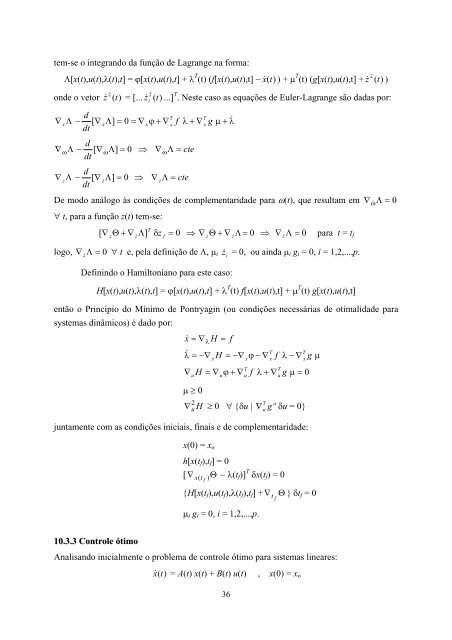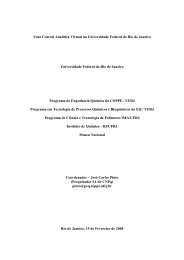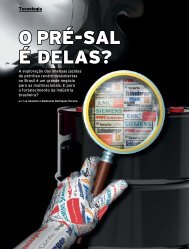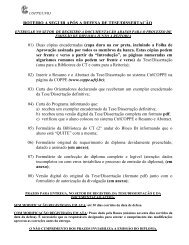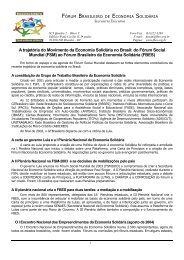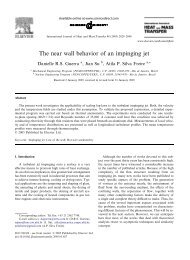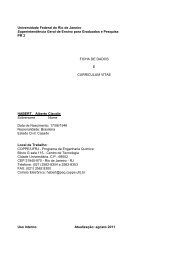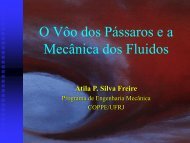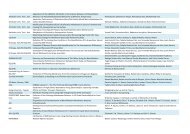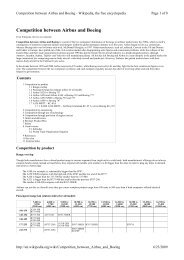CapÃtulo 10 - Programa de Engenharia QuÃmica - COPPE / UFRJ
CapÃtulo 10 - Programa de Engenharia QuÃmica - COPPE / UFRJ
CapÃtulo 10 - Programa de Engenharia QuÃmica - COPPE / UFRJ
Create successful ePaper yourself
Turn your PDF publications into a flip-book with our unique Google optimized e-Paper software.
tem-se o integrando da função <strong>de</strong> Lagrange na forma:[x(t),u(t),(t),t] = [x(t),u(t),t] + T (t) (f[x(t),u(t),t] x (t) ) + T (t) (g[x(t),u(t),t] + z 2 ( t))on<strong>de</strong> o vetor z 2 ( t)= [... ( ) ...] T . Neste caso as equações <strong>de</strong> Euler-Lagrange são dadas por:d [ x]dtx0 zddtddt[ ] 0 z 2 itx Txf cte[ ] 0 ctezzTxg De modo análogo às condições <strong>de</strong> complementarida<strong>de</strong> para (t), que resultam em 0 t, para a função z(t) tem-se:T[ z z ]zf 0 z z 0 z 0 para t = t flogo, 0 t e, pela <strong>de</strong>finição <strong>de</strong> , i z = 0, ou ainda i g i = 0, i = 1,2,...,p. zDefinindo o Hamiltoniano para este caso:iH[x(t),u(t),(t),t] = [x(t),u(t),t] + T (t) f[x(t),u(t),t] + T (t) g[x(t),u(t),t]então o Princípio do Mínimo <strong>de</strong> Pontryagin (ou condições necessárias <strong>de</strong> otimalida<strong>de</strong> parasystemas dinâmicos) é dado por:x H f H uHx u xTufTxf Tu Txg 0g 0 2 u HT a 0 {u | ug u = 0}juntamente com as condições iniciais, finais e <strong>de</strong> complementarida<strong>de</strong>:x(0) = x oh[x(t f ),t f ] = 0 )[ x t (t f )] T x(t f ) = 0( f{H[x(t f ),u(t f ),(t f ),t f ] + i g i = 0, i = 1,2,...,p. ft } t f = 0<strong>10</strong>.3.3 Controle ótimoAnalisando inicialmente o problema <strong>de</strong> controle ótimo para sistemas lineares:x (t) = A(t) x(t) + B(t) u(t) , x(0) = x o36


